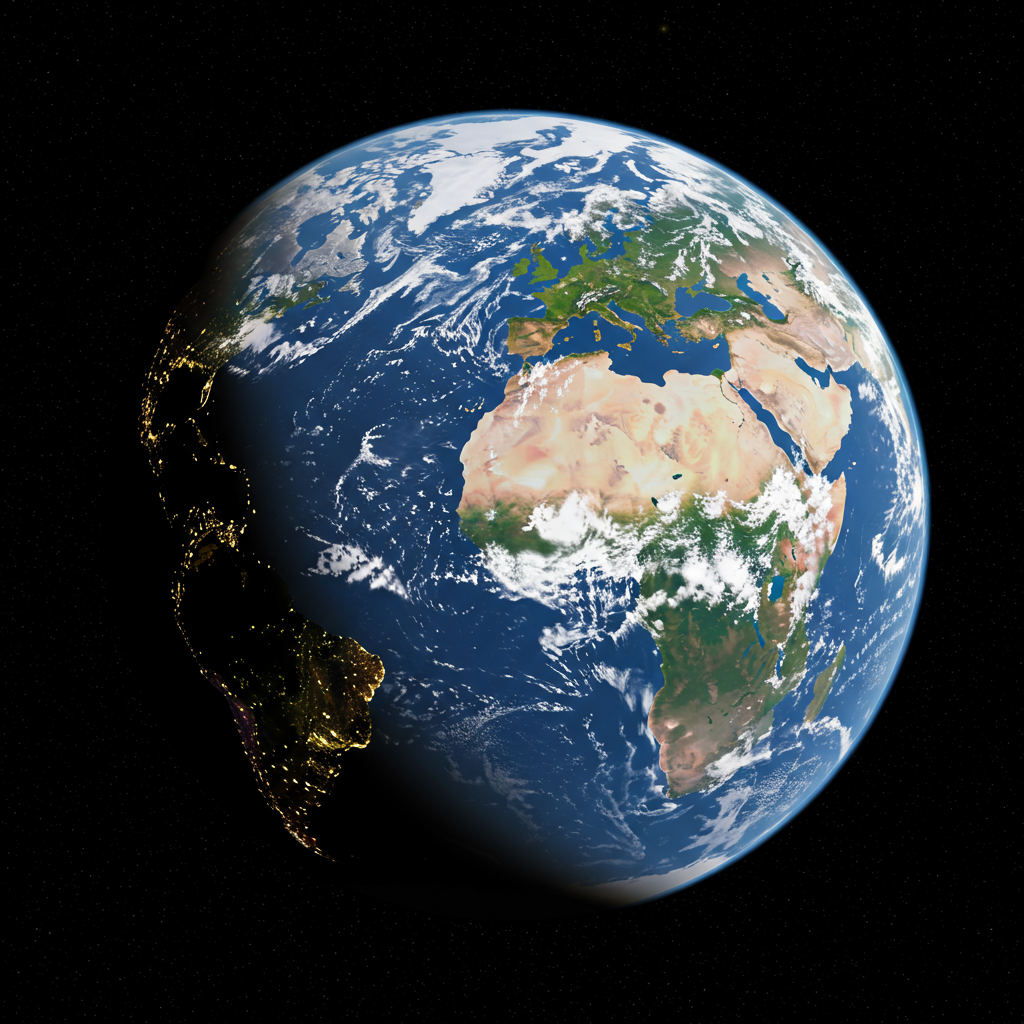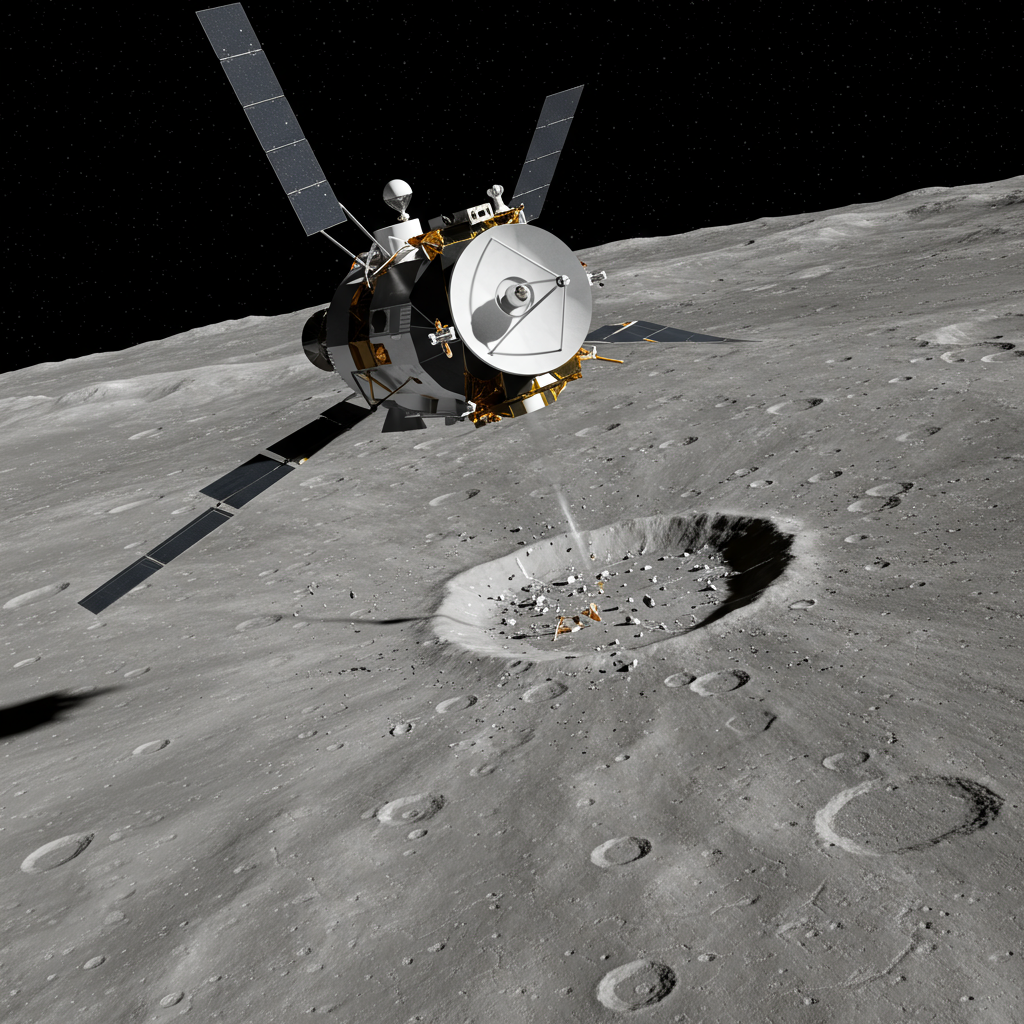On July 3, 2025, our planet earth reaches a remarkable point in its annual journey around the Sun. This specific moment is known as aphelion. It marks the exact time when Earth is farthest away from the star that anchors our solar system. Far from feeling cold due to this increased distance, many in the Northern Hemisphere are experiencing the peak of summer. This celestial alignment reveals fascinating details about earth’s orbital mechanics and the true cause of our seasons.
At precisely 3:54 pm ET on July 3, 2025, Earth’s center will be at its maximum distance from the Sun’s center for the year. This aphelion point is a natural consequence of Earth’s orbit. Our planet does not trace a perfect circle around the Sun. Instead, its path is an ellipse, slightly stretched out. This elliptical shape means the distance between Earth and the Sun constantly changes.
Understanding Earth’s Elliptical Path
Johannes Kepler, the German astronomer, first accurately described planetary motion in the early 17th century. His laws showed that planets travel in elliptical orbits, not circles. This discovery was fundamental to understanding celestial mechanics. Because of this elliptical shape, Earth has a point in its orbit where it is closest to the Sun and a point where it is farthest away.
The closest point is called perihelion. Perihelion typically occurs in early January each year. For instance, the perihelion following the July 2025 aphelion will be around January 3, 2026. The farthest point is aphelion, happening around early July. These two points represent the extremes of Earth’s distance from the Sun during its yearly trip.
Aphelion vs. Perihelion: Quantifying the Distance
The difference in distance between aphelion and perihelion is significant. On July 3, 2025, at aphelion, Earth will be approximately 152,087,738 kilometers (about 94,502,939 miles) from the Sun. This is the maximum distance for the year.
Contrast this with perihelion in early January. At its closest, Earth is roughly 147 million kilometers (about 91 million miles) away. This puts Earth about 5.1 million kilometers (around 3.2 million miles) closer to the Sun at perihelion compared to aphelion. This distance variation means Earth receives about 6.8 percent more solar radiation when it is closest to the Sun in January than when it is farthest in July.
The Aphelion Paradox: Summer Heat When Farthest?
This significant difference in solar radiation raises a natural question. If Earth receives less energy from the Sun at aphelion in July, why is this the season for heat waves and warm weather in the Northern Hemisphere? The answer lies not in our distance from the Sun, but in our planet’s orientation in space.
The timing of aphelion and perihelion relative to the solstices (marking the start of summer and winter) is largely coincidental. These orbital distance points do not dictate our seasons. Seasons are determined by Earth’s axial tilt.
Earth’s Axial Tilt: The True Season Maker
Earth’s axis is tilted at an angle of about 23.4 degrees relative to its orbital plane around the Sun. This tilt is the primary driver of seasonal changes. As Earth orbits the Sun, different hemispheres are tilted either towards or away from the Sun.
During the Northern Hemisphere’s summer (around June to August), this hemisphere is tilted towards the Sun. This tilt causes two main effects:
Direct Sunlight: The Sun’s rays hit the Northern Hemisphere more directly, concentrating solar energy over a smaller area.
Longer Days: The Northern Hemisphere experiences longer periods of daylight, allowing more time for the surface to heat up.
These combined effects lead to warmer temperatures and the summer season in the Northern Hemisphere. Simultaneously, the Southern Hemisphere is tilted away from the Sun. It receives less direct sunlight spread over a larger area and experiences shorter days, resulting in winter. Six months later, as Earth completes half its orbit, the situation reverses. The Southern Hemisphere tilts towards the Sun, experiencing summer, while the Northern Hemisphere tilts away, experiencing winter.
The impact of this axial tilt on the intensity and duration of sunlight far outweighs the effect of the slight variation in Earth’s distance from the Sun. This is why summer occurs in the Northern Hemisphere when Earth is farthest from the Sun at aphelion.
Why the Dates of Aphelion and Perihelion Shift
The exact date and time of aphelion and perihelion are not fixed forever. They undergo gradual, predictable shifts over long periods. This variation is due to the gravitational influences of other celestial bodies in the solar system, particularly the larger planets like Jupiter and Saturn. Their subtle tugs on Earth’s orbit cause the perihelion and aphelion points to precess, meaning they slowly shift their position relative to the stars and the solstices.
This shift happens very slowly. The date of aphelion, for example, shifts by about one day every 58 years. This drift is permanent. Minor year-to-year variations of a couple of days can also occur. These smaller fluctuations are influenced by complex gravitational interactions and the adjustments required for leap years in our calendar.
Looking back through history reveals the magnitude of this shift. In the late 19th century, Perihelion Day actually coincided with New Year’s Day. Further back, around the mid-1200s, the solstices themselves occurred on the same days as aphelion and perihelion. Understanding this long-term movement is part of charting Earth’s dynamic orbital path.
The Changing Shape of Earth’s Orbit
It’s not just the timing of aphelion and perihelion that changes; the shape of Earth’s elliptical orbit also varies over immense timescales. The gravitational pull from giant planets like Jupiter and Saturn subtly influences Earth’s path, causing the ellipse to become slightly more or less elongated. Over a cycle of hundreds of thousands of years, Earth’s orbit fluctuates between being nearly a perfect circle and being more noticeably elliptical. This variation in orbital eccentricity is one component of the Milankovitch cycles, long-term astronomical patterns thought to influence Earth’s climate over thousands of years.
Currently, Earth’s orbit is considered relatively close to a circle compared to its historical extremes. Interestingly, while the shape changes, the total length of the year remains remarkably constant, governed by fundamental laws of gravity.
Orbital Shape and Season Length
Even though the changing distance isn’t the cause of seasons, the shape of the orbit does subtly affect their duration. Astronomically, seasons are defined by Earth’s position in its orbit relative to the solstices and equinoxes. Since Earth moves faster when closer to the Sun (near perihelion) and slower when farther away (near aphelion), the time it takes to traverse different parts of the elliptical orbit varies.
Because aphelion currently occurs near the Northern Hemisphere summer solstice, Earth moves slightly slower during this part of its orbit. This slower pace means the Northern Hemisphere summer lasts longer than its winter. Similarly, spring is longer than autumn. With Earth’s current orbital shape, Northern Hemisphere summer is about 4.66 days longer than winter, and spring is roughly 2.9 days longer than autumn. Conversely, seasons in the Southern Hemisphere have the opposite lengths.
Minor Effects and What Aphelion Means for You
While axial tilt dominates the season story, the distance variation isn’t entirely without consequence, although the effects are usually minimal. The Sun’s apparent size in the sky changes slightly between aphelion and perihelion. At aphelion, the Sun appears about 1.7% smaller in diameter than at perihelion. This difference is minuscule and not noticeable to the naked eye.
The stronger gravitational pull at perihelion can also slightly influence tides, particularly impacting the Southern Hemisphere, though these effects are minor and don’t cause significant coastal changes.
Ultimately, Aphelion Day 2025 is a reminder of Earth’s dynamic journey through space. It highlights the elegance of orbital mechanics and reinforces our understanding that seasons are a direct result of our planet’s consistent tilt, not its varying distance from the Sun. Observing or contemplating this event can deepen our appreciation for the complex celestial ballet that governs our world.
Frequently Asked Questions
What exactly is Aphelion Day and when does it happen in 2025?
Aphelion Day marks the point in Earth’s elliptical orbit when it is farthest from the Sun for the year. In 2025, Aphelion Day occurs on July 3rd. Specifically, Earth will reach its farthest point at 3:54 pm ET on this date. This astronomical event happens annually in early July due to Earth’s non-circular path around the Sun.
If Earth is farthest from the Sun at aphelion in July, why is it summer in the Northern Hemisphere?
Seasons on Earth are not caused by the planet’s distance from the Sun. They are caused by the tilt of Earth’s rotational axis, which is about 23.4 degrees relative to its orbital plane. In July, the Northern Hemisphere is tilted towards the Sun, receiving more direct sunlight and experiencing longer days. This axial tilt’s effect on solar energy intensity and daylight hours is far more significant than the slight distance variation, resulting in summer despite Earth being farthest from the Sun.
Does the Earth’s distance from the Sun have any effect on seasons or climate at all?
While distance doesn’t cause seasons, the variation does have minor effects. Earth receives about 6.8% less solar radiation at aphelion than at perihelion, though this has little impact on short-term weather compared to the tilt. The changing distance and orbital speed slightly affect the length of seasons; for example, Northern Hemisphere summer is currently longer than winter because aphelion occurs near the summer solstice. Over thousands of years, changes in the orbit’s shape (part of Milankovitch cycles) can influence long-term climate patterns.
Aphelion Day 2025 offers a moment to reflect on Earth’s precise movements in the vastness of space. It’s a testament to Kepler’s laws and a clear demonstration that our seasons are fundamentally linked to our planet’s tilt. While we might be slightly farther from the Sun, the consistent warmth of summer in the Northern Hemisphere serves as a powerful, real-world lesson in astronomy.




